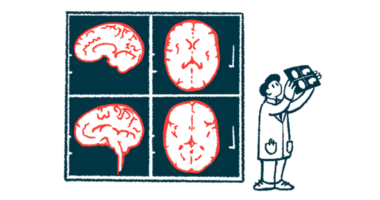Not all disability progression is permanent in RRMS, data suggest
Nearly a third of patients who experience PIRA later improve: Study

- Disability progression independent of relapse activity (PIRA) in relapsing-remitting multiple sclerosis is not always permanent; 32% of patients improve.
- PIRA regression lowers risk of severe disability and secondary progressive multiple sclerosis.
- Younger age and highly effective disease-modifying therapies reduce persistent PIRA risk.
Disability progression is not always permanent for people with relapsing-remitting multiple sclerosis (RRMS), even when it occurs independent of a relapse, a new study has found.
Researchers report that nearly one-third of RRMS patients who experience progression independent of relapse activity (PIRA) see their disability levels ease in the years following the initial event. These patients are far less likely to transition to secondary progressive MS (SPMS) or reach severe disability milestones, especially if they are younger and use highly effective disease-modifying therapies (DMTs), compared with patients who experience persistent disability progression.
The study, “Persistent progression independent of relapse activity in multiple sclerosis,” was published in Brain Communications.
What is PIRA?
RRMS, the most common type of MS, is marked by relapses where symptoms worsen and periods of remission where symptoms ease or go away. Although relapses can drive disability progression in RRMS, patients can also experience PIRA, which is defined as an increase in Expanded Disability Status Scale (EDSS) scores that is sustained for six months or more, and that is independent of a relapse.
For some people with RRMS who experience PIRA, disability levels remain persistently higher and may continue to worsen over time. However, in other patients, disability levels may ease after the initial PIRA event.
In this study, researchers sought to better understand the factors associated with these different patterns of PIRA. Of note, most of the scientists have financial ties to pharmaceutical companies.
For their analysis, the researchers utilized data from the MSBase registry, an international database that collects data from individuals with MS and other similar conditions.
A total of 4,713 RRMS patients in the registry experienced PIRA between April 1995 and January 2024. After a median follow-up of 8.7 years, 3,206 (68%) of these patients showed no improvement in disability, whereas 1,507 (32%) experienced a sustained reduction in disability levels after their PIRA event.
This meant that the PIRA was long-lasting in about two-thirds of the patients, while it reversed to some extent in the remaining patients, with disability becoming somewhat less severe in the years after the initial event.
“We showed that 32% of RRMS patients experienced a 6-month confirmed EDSS improvement after a PIRA event, i.e. a regression of PIRA,” the researchers wrote. “This improvement was very slow, with a median time to improvement of 2.6 years.”
PIRA regression lowers risk of SPMS
Statistical analyses showed patients who experienced such a PIRA regression had an 81% lower risk of reaching an EDSS score of 6, which indicates substantial walking problems, and an 82% lower risk of transitioning to SPMS.
“In cases of non-persistent PIRA, we found more than an 80% lower risk of reaching severe disability and SPMS compared to persistent PIRA,” the researchers wrote.
Looking at factors that influenced PIRA regression, the results showed that older patients and those with more severe disability at the start of follow-up had a higher risk of experiencing persistent PIRA. In turn, patients who used high-efficacy DMTs had a lower risk of having persistent PIRA.
“Our findings showed, for the first time, that patients who used high-efficacy DMT during PIRA were 22% more likely to experience non-persistent PIRA, i.e. to improve their disability again,” the researchers wrote.
These data suggest that DMTs may help reduce the risk of long-term PIRA; however, the researchers cautioned that further studies are needed to better understand the biological underpinnings of PIRA and how these are affected by treatments.







